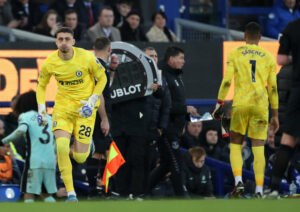Nine points. Seven Days. Three matches. One formation change. Following a skid of picking up just two points from nine available, head coach Xisco Munoz has helped steer Watford to a brilliant run of form – which presently leaves the Hornets out of the automatic promotion spots on goal-differential. And, with a third of the season remaining, the Hornets know they still control their fate.
Xisco Munoz Came to Vicarage Road With Questionable Tactics
Xisco Munoz Arriving With a 4-4-2
The Spaniard guided Watford to an impressive 1-0 victory over league-leaders Norwich City on his debut. The victory preceded a defeat at promotion-rivals Swansea. A three-match winning-run (a run in which victories were just edged out) was then followed by a three-match winless streak. But, the run of form before the club’s most recent three matches had a key tactical difference.
Prior to Watford’s 6-0 thrashing of Bristol City, Munoz solely called for a 4-4-2 formation (in the match against Coventry City, Munoz tried a “4-2-3-1” which shaped up closer to a 4-4-2 for most of the match). The increasingly unpopular combination of Andre Gray and Troy Deeney, started the majority of the matches. The two strikers have a mere two goals (combined) from open play all season.
Watford’s attacking threat was further hindered by the lack of inclusion Joao Pedro had. Further, Watford’s wide players (Ismaila Sarr, Ken Sema, and Will Hughes at times) did not get as much attacking license as necessary. Overall, the 4-4-2 limited Watford’s goal-scoring threat in more ways than one. But, that is not the only way the 4-4-2 harmed Watford.
In the midfield, the Hornets did not have control. For example, in the first half of their 2-1 victory over Stoke City, the Potters controlled the tempo through a simple outnumbering in the centre of the pitch.
Only in the second half, once Deeney dropped deep into midfield positions, did Watford gain control of the match. The Hornets’ underwhelming 0-0 draw against Coventry City saw the Sky Blues dictating the tempo of the match through their midfield overload (having three central midfielders against Watford’s two).
Poor Run of Form
After grinding out three wins in a row, the Hornets drew to Millwall, lost to Queens Park Rangers, and drew to Coventry City – a run of form which is unacceptable to any team vying for promotion. The imbalances of the 4-4-2 came to haunt the Hornets.
Munoz’s job then came under serious scrutiny; his future did not appear secure. Between the poor run of form and losing Deeney to injury, Munoz knew change was necessary.
Switching to a 4-3-3 at the Heart of Watford’s Revival
Xisco Munoz Now Has Watford’s Best Formula
Many Watford fans argue Deeney’s inclusion in the starting eleven every match harmed the club’s performances. The Hornets’ success since switching to a 4-3-3 justifies those claims.
Deeney is better when paired alongside another striker. However, the 4-3-3 formation better suits the Hornets’ top goal-scorer Pedro. In a sense, Munoz likely no longer feels the requirement to start the club-captain, and that has helped Watford change tactics.
Watford have a perfect record since switching to the 4-3-3. In three matches, the Hornets have scored nine times and conceded once (which was an own-goal). The balance provided by the 4-3-3 is perfect – and has certainly bought Munoz much-deserved breathing room away from the axe.
Sema and Sarr get much more attacking license. Femenia and Masina are further encouraged to make overlapping runs in attack. Control of the midfield is all but solidified too.
By switching from a 4-4-2 to a 4-3-3, the Hornets now have the optimal mixing of midfield dominance and attacking threat, while not sacrificing defensive soundness. With tough clashes against Blackburn and Bournemouth coming up, the 4-3-3 has a prime opportunity to further establish itself as Watford’s best formation.
Main Photo






